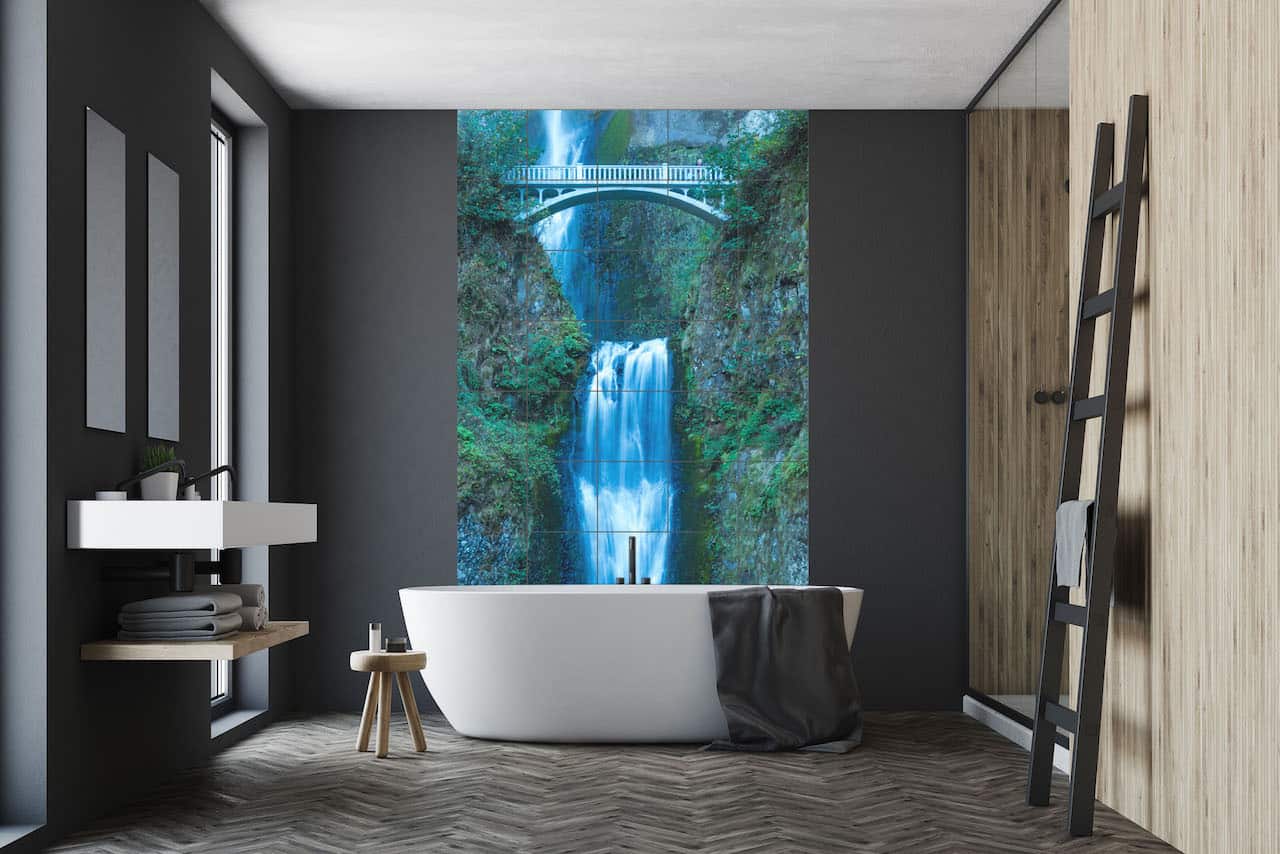Tiles on and above the wall
Images in the form of large-scale photos are surrounding us literally on every corner.
From the photos on shop and restaurant walls through advertisements on house facades to billboards by the roads. It is because the latest technologies make it possible to transfer the photo on countless types of materials.
Revolutionary technology in the field of photography today offers the possibility to place the desired image on tiles.
This technique was developed in Germany and offers a relatively unique element of the interior that stands out in any room. “Thanks to special technologies, it is possible to print a photo or other image on one or more tiles, from which a square image of several square meters can be created in the form of a mosaic,” says Andre Beurskens of C.ART Studio, who is beginning to implement “photo books” in Czech. As with other milestones, evolution in the development of photography and its transmission has taken decades. “Before reaching today’s quality, tests were carried out for 30 years,” Beurskens said.
The copying process takes one to two days and each piece is a handmade original. “The tile with the film on which it is shot is fired in an oven at 900 degrees. The film burns and the image remains on the material. After cooling, the glaze is applied to increase gloss and durability,” Beurskens said, adding that the tiles can be used both in a private home and to diversify the design in hotels, restaurants or wellness centres.
Historical excursion: from stone to pixels
The ability of today to place a photo on wood, textiles or even carpets and tiles has been developed for a long time. The oldest photograph in the world is a painting on a copper plate from 1825 showing a man leading a horse. It is by the Frenchman Joseph Niepce, whose most famous photograph, entitled “The View from the Window in Le Gras”, dates from 1826 and is captured on a tinplate. The inventor, however, only came to the idea of using tinplate after several years of research when he first tried to take pictures on a lithographic stone. The historical milestone was the year 1860, when William Fox Talbot developed the negative-positive process. This made it possible to make copies of a photograph from an original and transfer it to paper.

Diese Methode wurde erst in der zweiten Hälfte des 20. Jahrhunderts mit dem Aufkommen digitaler Fotos überwunden. Diese Ära begann 1969 mit der Entwicklung eines CCD-Sensors unter den Händen der Erfinder George Elwood Smith und Willard Boyl. Es wurde von Sony verwendet und 1981 wurde die erste CCD-Digitalkamera eingeführt, kein regulärer Film. Die erste Farbkamera-Digitalkamera konnte 1994 gekauft werden, als der QuickTake 100 von Apple eingeführt wurde. In der Tschechischen Republik begann der Verkauf von Digitalkameras etwa zwei Jahre später.
Source: ESTAV.CZ 24 Febuary 2019. You can find the press article here.

